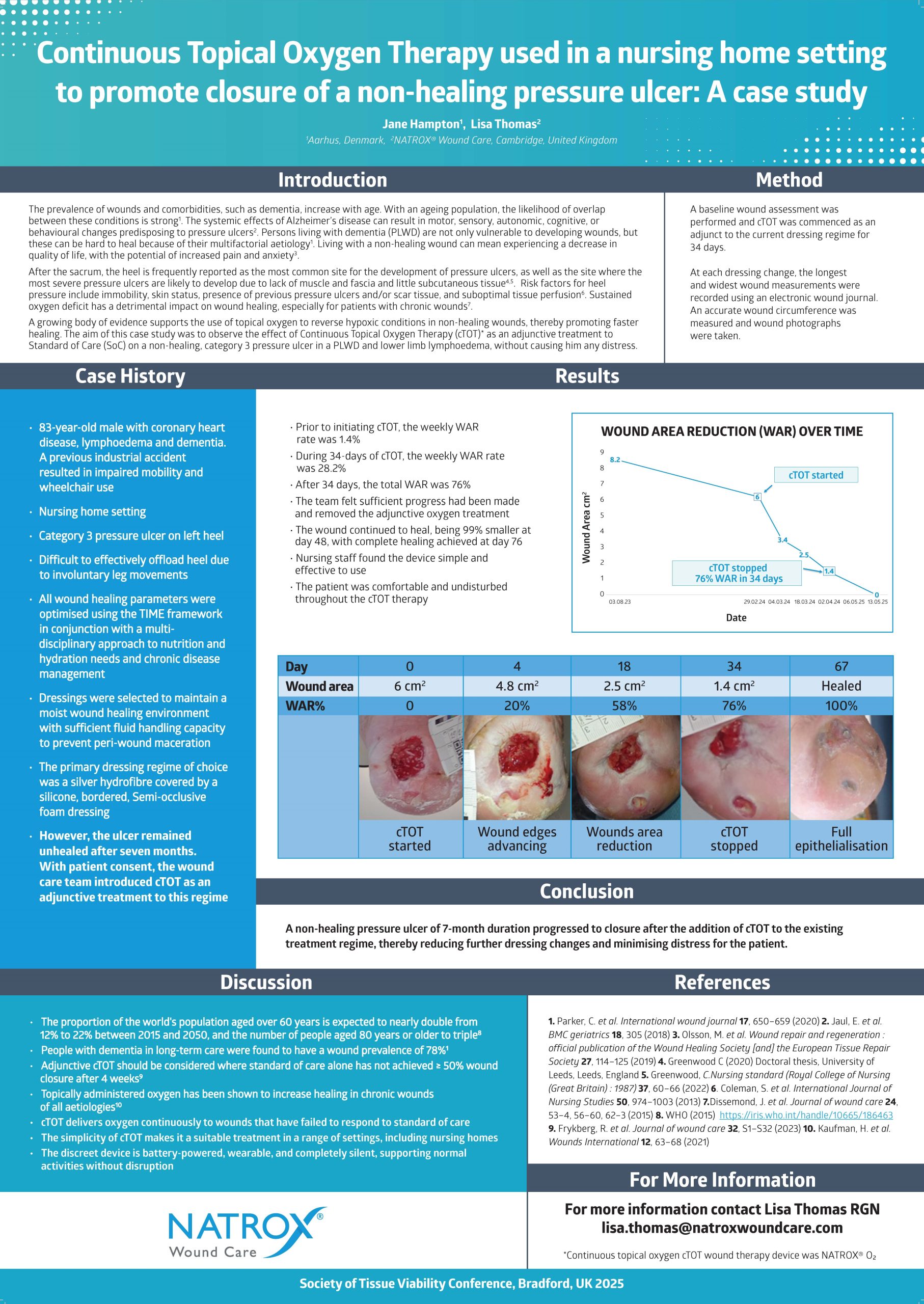Continuous Topical Oxygen Therapy Used in a Nursing Home Setting to Promote Closure of a Non-Healing Pressure Ulcer: A Case Study

Case History
- 83-year-old male with coronary heart disease, lymphoedema and dementia.
- A previous industrial accident resulted in impaired mobility and wheelchair use
- Nursing home setting
- Category 3 pressure ulcer on left heel
- Difficult to effectively offload heel due to involuntary leg movements
- All wound healing parameters were optimised using the TIME framework in conjunction with a multidisciplinary approach to nutrition and hydration needs and chronic disease management
- Dressings were selected to maintain a moist wound healing environment with sufficient fluid handling capacity to prevent peri-wound maceration
- The primary dressing regime of choice was a silver hydrofibre covered by a silicone, bordered, Semi-occlusive foam dressing
- However, the ulcer remained unhealed after seven months. With patient consent, the wound care team introduced cTOT as an adjunctive treatment to this regime
Introduction:
The prevalence of wounds and comorbidities, such as dementia, increase with age. With an ageing population, the likelihood of overlap between these conditions is strong. The systemic effects of Alzheimer’s disease can result in motor, sensory, autonomic, cognitive, or behavioural changes predisposing to pressure ulcers. Persons living with dementia (PLWD) are not only vulnerable to developing wounds, but multifactorial aetiology complicates wound closure. Living with a non-healing wound can mean experiencing a decrease in quality of life, with the potential of increased pain and anxiety.
The heel is the second most frequently reported site for pressure ulcer formation. Due to lack of muscle, fascia and little subcutaneous tissue, heel pressure ulcers are often more severe than those found in other locations. Risk factors for heel pressure include immobility, skin status, presence of previous pressure ulcers and/or scar tissue, and suboptimal tissue perfusion. Sustained oxygen deficit has a detrimental impact on wound healing, especially for patients with chronic wounds.
A growing body of evidence supports the use of topical oxygen to reverse hypoxic conditions in non-healing wounds, thereby promoting faster healing. The aim of this case study was to observe the effect of Continuous Topical Oxygen Therapy (cTOT)* as an adjunctive treatment to Standard of Care (SoC) on a non-healing, category 3 pressure ulcer in a PLWD and lower limb lymphoedema, without causing him any distress.
Results:
- Prior to initiating cTOT, the weekly WAR rate was 1.4%
- During 34-days of cTOT, the weekly WAR rate was 28.2%
- After 34 days, the total WAR was 76%
- The team felt sufficient progress had been made and removed the adjunctive oxygen treatment
- The wound continued to heal, being 99% smaller at day 48, with complete healing achieved at day 76
- Nursing staff found the device simple and effective to use
- The patient was comfortable and undisturbed throughout the cTOT therapy
Authors:
Jane Hampton, Lisa Thomas